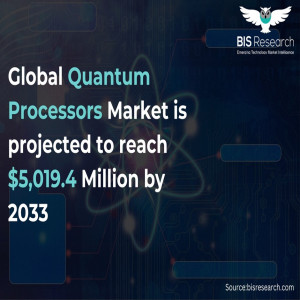
The Internet of Things (IoT) market is set to experience exponential growth over the next decade, with projections estimating its value will soar to $5.33 trillion by 2032, according to industry forecasts. This surge is driven by technological advancements, increasing cloud adoption, and a steady rise in wireless networking capabilities, making IoT an integral part of modern industries and day-to-day life.
Research highlights a compound annual growth rate (CAGR) of 21.3% for the IoT sector from 2023 to 2032. The rapid expansion stems from its adoption across sectors such as manufacturing, healthcare, smart homes, transportation, and agriculture. IoT devices, which enable real-time data collection and communication between systems, are becoming central to operational efficiency, cost reductions, and innovation.
Increased usage of cloud platforms is another significant contributor to IoT’s robust market growth. Companies are relying on cloud-based infrastructure to manage vast amounts of data generated by IoT devices. Cloud computing allows for better storage, security, and data management, which, in turn, facilitates the seamless integration of IoT systems. Industry experts have pointed out that the scalability and flexibility of cloud technologies will only further IoT’s widespread adoption.
The manufacturing sector has been one of the strongest adopters of IoT technology. The integration of IoT into manufacturing operations has transformed production processes by enhancing monitoring, optimizing machine performance, and enabling predictive maintenance. This has led to significant cost savings and increased productivity for manufacturers globally. With IoT sensors providing real-time insights into machine health, companies can prevent unexpected breakdowns, reducing downtime and minimizing the loss of revenue.
In healthcare, IoT has revolutionized patient care, making it more efficient and accessible. Wearable devices, remote monitoring tools, and smart medical equipment have improved health management by enabling continuous monitoring and immediate feedback for patients and healthcare providers alike. Hospitals are also increasingly deploying IoT solutions to streamline operations, track assets, and monitor patient conditions, reducing human errors and improving overall patient outcomes.
The proliferation of smart home technologies has made the IoT market more visible to the general consumer. From smart thermostats to security systems, IoT devices have allowed homeowners to control their living environments with greater ease and precision. Industry analysts believe that the home automation segment will witness substantial growth as consumers increasingly seek convenience, security, and energy efficiency through connected devices.
Agriculture is another sector experiencing transformative changes due to IoT. Farmers are leveraging IoT solutions for precision agriculture, where data from sensors placed on fields, drones, and farm equipment is used to optimize crop yields and monitor soil health. This has enabled more efficient water usage, better pest control, and improved crop management. With a growing emphasis on sustainable farming practices, IoT is expected to play a crucial role in meeting the world’s food production demands.
Transportation and logistics have also benefited from IoT integration. Companies in these sectors are using connected devices to monitor fleets, track shipments in real-time, and manage supply chains more effectively. IoT-enabled tracking systems provide businesses with detailed insights into the location and condition of goods, helping to improve delivery times, reduce fuel consumption, and enhance customer satisfaction.
The Asia-Pacific region is expected to dominate the IoT market over the forecast period. Countries such as China, Japan, and South Korea have made significant investments in IoT infrastructure, which has accelerated the development of smart cities, industrial IoT applications, and advanced telecommunication networks. China’s government, in particular, has been pushing for widespread IoT adoption across various industries, including manufacturing, agriculture, and healthcare, further fueling market growth in the region.
North America remains a key player in the IoT market, especially with the rapid expansion of smart cities and advancements in 5G technology. The United States has been a leader in adopting IoT across industries, with major technology companies heavily investing in research and development to enhance IoT capabilities. Europe, too, has seen a steady rise in IoT applications, particularly in the automotive and healthcare sectors.
Security remains a critical concern for the IoT industry. With the increasing number of devices connected to the internet, the risks associated with cyber-attacks and data breaches have also risen. IoT devices often lack robust security protocols, making them vulnerable to hacking attempts. Industry experts have emphasized the need for stronger security frameworks and regulations to protect sensitive data and ensure the reliability of IoT networks.
The rapid development of 5G networks is expected to play a crucial role in the growth of IoT. With its promise of ultra-fast speeds and lower latency, 5G is set to unlock new opportunities for IoT applications, particularly in sectors such as autonomous vehicles, industrial automation, and remote healthcare. The convergence of 5G and IoT is expected to lead to unprecedented advancements in how industries operate, bringing about more efficient, real-time data transmission and enhanced connectivity.


